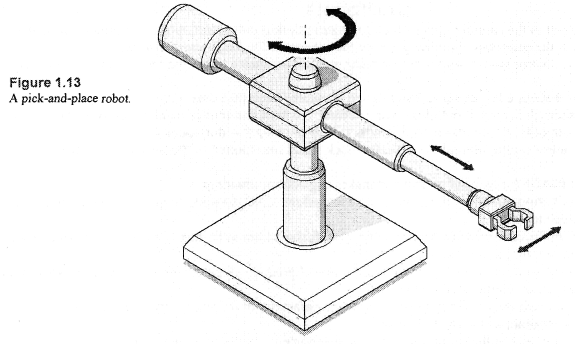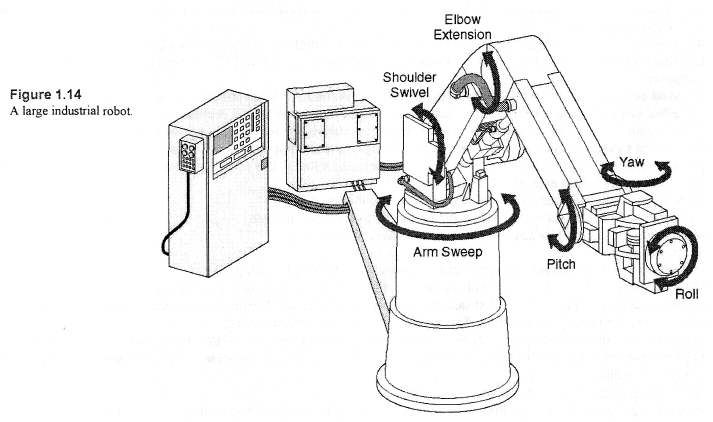
- •Содержание:
- •Введение
- •Give the Russian equivalents to the following international words and word-combinations:
- •Memorize the meaning of the following words and word-combinations from the preface:
- •Read the preface and find out the following:
- •Preface
- •Answer the questions of Ex. 3.
- •Translate the preface using a dictionary. Text 1. Control systems
- •Memorize the meaning of the following words and word-combinations from Text 1:
- •Look through Text 1 to find out the following:
- •Control systems
- •Text 2. Open–loop control systems
- •Translate Text 2 orally.
- •Text 3. Closed–loop control systems
- •Read and translate Text 3:
- •Text 4. Analog and digital control systems
- •Analyze the grammatical structure of the following sentences and translate them:
- •Look through Text 5 to find out the following:
- •III. Look through Text 6 to find out the following:
- •IV. Answer the questions of Ex. III.
- •V. Read text 6 attentively. Translate it orally. Sequentially Controlled Systems
- •Read and give a short summary of Text 7.
- •Answer the questions of Ex. III.
- •Look through the text once again to sum it up (orally or in writing).
- •Read and give a short summary of Text 9.
- •II. Make a list of terms from Text 9 and memorize them.
- •III. Translate Text 9 in writing.
- •Glossary
Answer the questions of Ex. III.
Look through the text once again to sum it up (orally or in writing).
T E X T 9.
R O B O T I C S
Read and give a short summary of Text 9.
Industrial robots are classic examples of position control systems. In most cases, the robot has a single arm with shoulder, elbow, and wrist joints, as well as some kind of hand known as an end effector. The end effector is either a gripper or other tool such


as a paint spray gun. Robots are used to move parts from place to place, assemble parts, load and off-load NC machines, and perform such tasks as spray painting and welding. Pick-and-place robots, the simplest type, pick up parts and place them somewhere else nearby. Instead of using sophisticated feedback control, they are often run open-loop using mechanical stops or limit switches to determine how far in each direction to go (sometimes called a "bang-bang" system). An example is shown in Figure 1.13. This robot uses pneumatic cylinders to lift, rotate, and extend the arm. It can be programmed to repeat simple sequence of operations. Sophisticated robots use closed-loop position systems for all joints. An example is the industrial robot shown in Figure 1.14. It has six independently controlled axes (known as six degrees of freedom) allowing it to get to difficult-to-reach places. The robot comes with and is controlled by a dedicated computer-based controller. This unit is also capable of translating human instructions into the robot program during the "teaching" phase.
The arm can move from point to point at a specified velocity and arrive within a few thousandths of an inch.
II. Make a list of terms from Text 9 and memorize them.
III. Translate Text 9 in writing.
List of Literature
Britannica 2006 Deluxe Edition – электронная версия.
Applications of control systems. Chapters 1-3. 1999.
Glossary
actuator The first component in the control system which generates physical movement, typically a motor. The actuator gets its instructions directly from the controller. Another name for the actuator is the final control element
analog control system A control system where the controller is based on analog electronic circuits, that is, linear amplifiers.
batch process A process that has a beginning and an end and is usually preformed over and over
closed-loop control system A control system that uses feedback. A sensor continually monitors the output of the system and sends a signal to the controller, which makes adjustments to keep the output within specification
comparator Part of the control system that subtracts the feedback signal (as reported by the sensor) from the set point, to determine the error.
computer-aided design (CAD) A computer system that makes engineering drawings
computer-aided manufacturing (CAM) A computer system that allows CAD drawings to be converted for use by a numerical control (NC) machine tool
computer-integrated manufacturing (CIM) A computer system that oversees every step in the manufacturing process, from customer order to delivery of finished parts
continuous process A process wherein there is a continuous flow of product—for example, a steam boiler where water is continuously pumped in and steam continuously comes out
controlled variable The ultimate output of the process; the actual parameter of the process that is being controlled
controller The machine intelligence of the control system
control strategy The set of rules that the controller follows to determine its output to the actuator
control system A system that may include electronic and mechanical components, where some type of machine intelligence controls a physical process
digital control system A control system where the controller is a digital circuit, typically a computer
direct digital control (DDC) An approach to process control where all controllers in a large process are simulated by a single computer
distributed computer control (DCC) An approach to process control where each process has its own local controller, but all individual controllers are connected to a single computer for programming and monitoring
error In a control system, the difference between where the system is supposed to be (set point) and where it really is
event control system A control system that cycles through a predetermined series of steps
event-driven operation In a sequentially controlled system, an action that is allowed to start or continue based on some parameter changes. This is an example of closed-loop control
feedback The signal from the sensor, which is fed back to the controller, follow-up system A control system where the output follows a specified path
forward path The signal-flow direction of the controller to the actuator
iteration See scan
motion control A term that refers to an electromechanical system wherein things move
numerical control (NC) A digital control system that directs machine tools, such as a lathe, to automatically machine a part
open-loop control system A control system that does not use feedback. The controller sends a measured signal to the actuator, which specifies the desired action. This type of system is not self-correcting.
pick-and-place robot A simple robot that does a repetitive task of picking up and placing an object somewhere else
programmable logic controller (PLC) A small, self-contained microprocessor-based controller used primarily to replace relay logic controllers
process The physical process that is being controlled
process control A control system that maintains a uniform, correct output for some industrial process
regulator system A control system that maintains an output at a constant value
robot A servomechanism type control system in the form of a machine with a movable arm
scan One cycle through the program loop of a computer-based controller
sensor Part of the control system that monitors the system output, the sensor converts the physical output action of the system into an electric signal, which is fed back to the controller
sequentially controlled system A control system that performs a series of actions in sequence, an example being a washing machine
servomechanism An electromechanical feedback control system where the output is linear or rotational movement of a mechanical part
set point The input signal to the control system, specifying the desired system output
time-driven operation In a sequentially controlled system, an action that is allowed to happen for a specified period of time. This is an example of open-loop control
